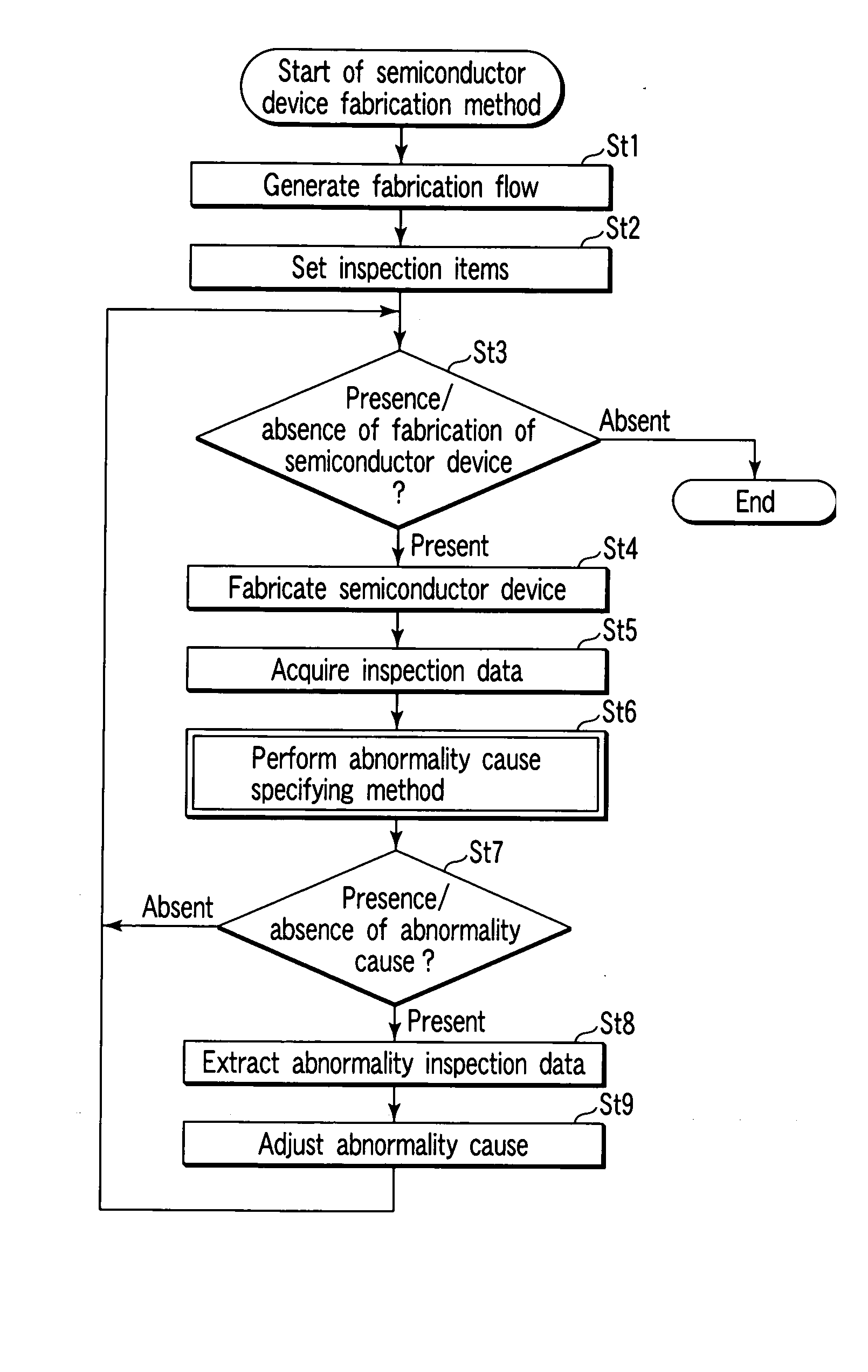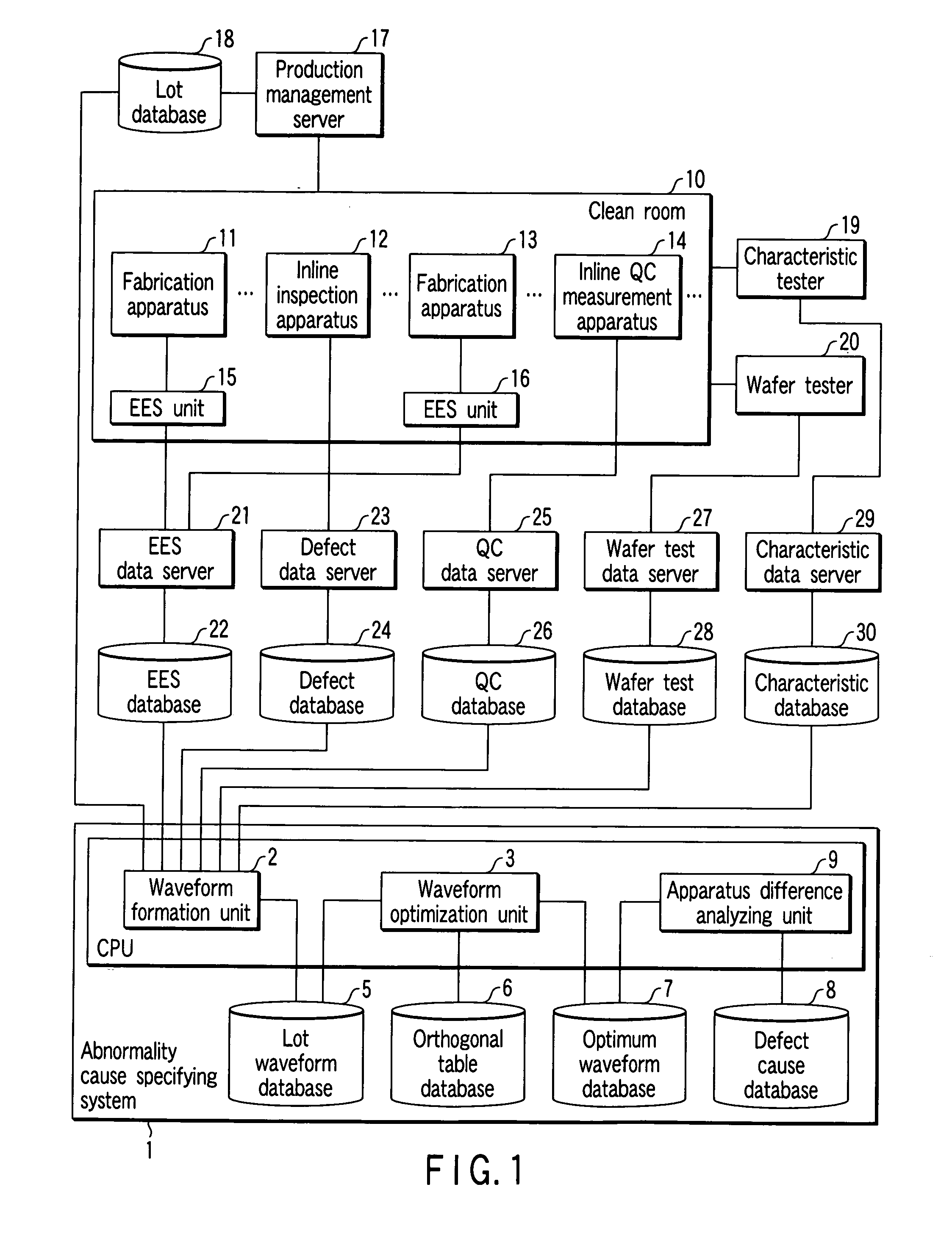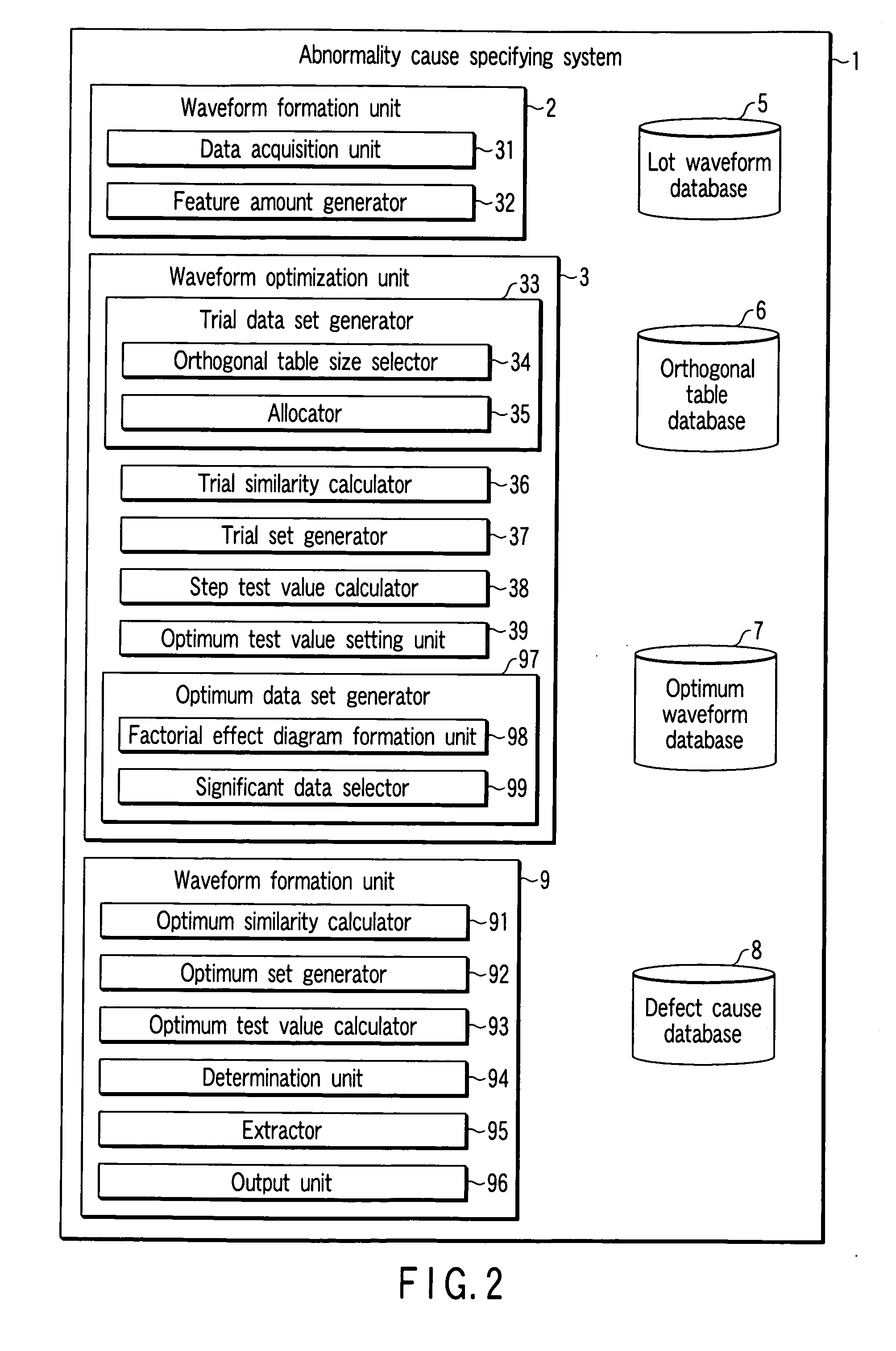Abnormality cause specifying method, abnormality cause specifying system, and semiconductor device fabrication method
a technology of abnormality and specifying system, applied in semiconductor/solid-state device testing/measurement, testing/monitoring control system, instruments, etc., can solve problems such as inability to specify data amount huge, and general difficulty in defining abnormality causes of defective products
- Summary
- Abstract
- Description
- Claims
- Application Information
AI Technical Summary
Benefits of technology
Problems solved by technology
Method used
Image
Examples
first embodiment
(Semiconductor Device Fabrication System)
[0036] As shown in FIG. 1, a semiconductor device fabrication system has a clean room 10 which includes fabrication apparatuses 11 and 13, an inline inspection apparatus 12, an inline quality control (QC) measurement apparatus 14, and equipment engineering systems (EESs) 15 and 16 connected to the fabrication apparatuses 11 and 13, respectively.
[0037] To fabricate semiconductor devices, the fabrication apparatuses 11 and 13 perform processing of semiconductor wafers forming lots under various operating conditions, and the states of semiconductor devices momentarily change in accordance with the processing. The device state can be represented by any of various physical amounts such as the internal pressure, gas flow rate, and temperature of a chamber, and the exposure amount of an exposure apparatus. Data of these physical amounts at each time is called EES data. The EES data can be obtained by attaching the EES units 15 and 16 for monitori...
second embodiment
[0112] In the first embodiment, whether to adopt waveform data is selected for all types of waveform data by using a two-level orthogonal table. However, it is also possible to perform selection beforehand so that specific waveform data is always selected as in the second embodiment. For example, assume that there is a clustering defect by which a number of defective chips are produced in the wafer center in a wafer test, and there are a plurality of causes for the same clustering defect in the wafer center.
[0113] In the first embodiment, a wafer center defective lot group Sc is formed using only waveform data of the wafer test. However, the cause of the defect cannot be specified even when apparatus difference analysis is performed on the wafer center defective lot group Sc.
[0114] In the second embodiment, therefore, wafer test data is always adopted in any trial when waveform data is to be selected by using an orthogonal table. In addition, when an optimum similar lot group Sco ...
third embodiment
[0115] In the third embodiment, a method which immediately detects an abnormality in a fabrication step and controls the detected fabrication step by using only a waveform data group acquired in semiconductor device fabrication steps will be described. Data acquired in semiconductor device fabrication steps is called inline data, and examples of the inline data are defect data, EES data, and QC data. The semiconductor device fabrication method of the first embodiment was exclusively applied to the inline data. Consequently, in an optimum similar lot set using an optimum waveform data set obtained by connecting waveform data of defect map data of fabrication step C shown in FIG. 20A and waveform data of chamber pressure data of a fabrication apparatus in fabrication step C shown in FIG. 20B, a large abnormality degree was detected in a specific fabrication apparatus in fabrication step C. When defect map data in fabrication step C of wafers in lots forming the optimum similar lot set...
PUM
 Login to View More
Login to View More Abstract
Description
Claims
Application Information
 Login to View More
Login to View More - R&D
- Intellectual Property
- Life Sciences
- Materials
- Tech Scout
- Unparalleled Data Quality
- Higher Quality Content
- 60% Fewer Hallucinations
Browse by: Latest US Patents, China's latest patents, Technical Efficacy Thesaurus, Application Domain, Technology Topic, Popular Technical Reports.
© 2025 PatSnap. All rights reserved.Legal|Privacy policy|Modern Slavery Act Transparency Statement|Sitemap|About US| Contact US: help@patsnap.com



